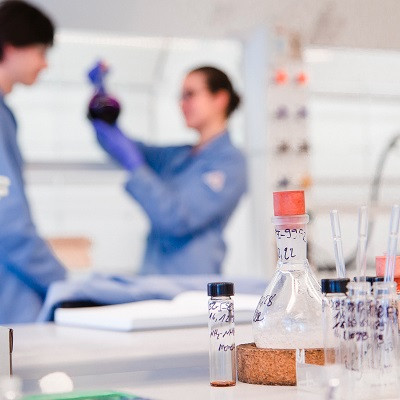
2021-01-10
Visited : 1060
A team of chemists from Emory University in Atlanta, US, has invented a shape-shifting peptide nanomaterial that can be triggered controllably - paving the way for potential biomedicine applications.
n a new research paper published in The Journal of the American Chemical Society, the team led by Emory University - together with correspondents from the Paul Scherrer Institut in Switzerland, Center of Cellular Imaging and NanoAnalytics at the University of Basel also in Switzerland, and the Argonne National Laboratory in Illinois, US - details the nature and behavior of the shape-shifting peptide nanomaterial. The newly invented material can transform from flat sheets to tubes as required, promising wide biomedicine applications - from tissue engineering to controlled drug and protein delivery.
An Intrinsically Biocompatible Nanomaterial
In its sheet form, the peptide nanomaterial is reported to be 10,000 times - or four orders of magnitude - thinner compared to the average width of a human hair. It is also made of synthetic collagen, making it intrinsically biocompatible with humans since naturally occurring collagen is the most abundant form of protein present in our bodies.
"No one has previously made collagen with the shape-shifting properties of our nanomaterial," claims Vincent Conticello, senior author of the study and a biomolecular chemistry professor at Emory, in a statement. He adds that the new material can be converted from sheets to tubes and back by changing the pH levels, or acid concentration, on the nanomaterial's environment.
A provisional patent has been applied by the Emory Office of Technology Transfer for the revolutionary peptide material. The first authors of the report are Andrea Merg, a former postdoc fellow in Conticello's lab now with the University of California, Merced, and Gavin Touponse, who worked on the discovery as an Emory undergrad and is now in medical school at Stanford.
Controlling Collagen
As the most abundant protein in the human body, collagen is found mostly in connective tissues - cartilage, tendons, ligaments, bones, and in the skin - but is also found in blood vessels, the gut, and other muscles and other parts of the body.
Collagen can also be taken from animals, often from livestock like pigs, used for various applications, mostly medicinal in nature. Emory University noted that Conticello's laboratory is among the number of facilities across the world whose efforts are focused on the development of synthetic collagen that can aid in the progress of complex technologies like biomedicine.
"As far back as 30 years ago, it became possible to control the sequence of collagen," Conticello added, noting that the field has garnered significant attention. However, he notes that the last 15 years have better improved the field through crystallography and electron microscopy advancements, allowing researchers to study structures at the nanoscale. The Emory professor also admits that there were elements of "luck" and "design."
Collagen protein is made up of a triple helix of stiff fibers like pencil graphite and packed tightly together in a crystalline array. These served as the basis of peptide sheets they fabricated, refining them so that each side will respond to limited functionality. However, they discovered that under certain conditions, the sheets curl up like scrolls - and that the process is reversible.
Read the original article on Science Times.